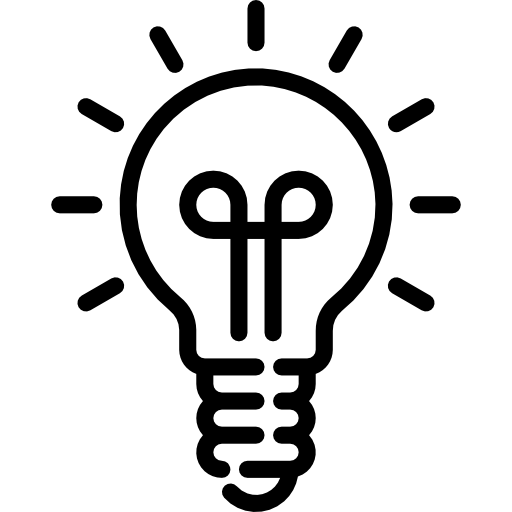Cognitive Dissonance Theory Psychology

By successfully reshaping someone’s perspective on their core convictions, the dissonance can be effectively eliminated. Cognitive dissonance isn’t limited to customers; it can also impact employees. When they encounter conflicting values or beliefs in the workplace, it can lead to job dissatisfaction and decreased engagement. Businesses must maintain consistent brand messaging and ensure their products or services align with the values and expectations they’ve cultivated among their customer base.
Acquire new information that outweighs the dissonant beliefs.

In his book “A Theory of Cognitive Dissonance,” Festinger proposed that two ideas can cognitive dissonance and addiction be consonant or dissonant. By Kendra Cherry, MSEdKendra Cherry, MS, is a psychosocial rehabilitation specialist, psychology educator, and author of the «Everything Psychology Book.» Kendra Cherry, MS, is a psychosocial rehabilitation specialist, psychology educator, and author of the «Everything Psychology Book.» The COVID-19 pandemic, an extreme public health crisis, cases rose to the hundred million and deaths at nearly four million worldwide. Reputable health organizations such as Lyu and Wehby studied the effects of wearing a face mask on the spread of COVID-19. When the COVID-19 vaccine was eventually released to the public, this only made the resistance stronger.
Action–motivation model
The internal discomfort and tension of cognitive dissonance could contribute to stress or unhappiness. People who experience dissonance but have no way to resolve it may also feel powerless or guilty. Cognitive dissonance plays a role in many value judgments, decisions, and evaluations. Becoming aware of how conflicting beliefs impact the decision-making process is a great way to improve your ability to make faster and more accurate choices. This is particularly true if the disparity between their beliefs and behaviors involves something that is central to their sense of self. There is also some ambiguity (i.e., vagueness) about the term “dissonance” itself.
Understand the world better with 40+ concepts.

After reading the reports about the various products, individuals rated the products again. They were then paid either $1 or $20 to tell a waiting participant (a confederate) that the tasks were really interesting. Almost all of the participants agreed to walk into the waiting room and persuade the confederate that the boring experiment would be fun. In their laboratory experiment, they used 71 male students as participants to perform a series of dull tasks (such as turning pegs in a peg board for an hour). At Space Between Counseling Services (SBCS), we’re a team of diverse therapists passionate about enriching your mental health through insightful articles. Licensed across MD, VA, NM, DE, DC (District of Columbia), and FL, we blend expertise in anxiety, depression, trauma, and more, striving for inclusivity in every piece we write.
The Moonies were able to boast that former British Prime Minister Ted Heath had attended their conferences, although it seems that he treated these as paid holidays. Hypocrisy involves a contradiction between a person’s supposed principles, beliefs, or character and who they really are or how they behave. Cognitive dissonance is the unpleasant mental state that may result if someone really does have certain beliefs but thinks or acts in a way that contradicts them.
|}
Signs of cognitive dissonance in teens can include:
- Members are also taught emotion-stopping techniques — especially to block feelings of homesickness, frustration towards leadership, illness, distress, and doubts.
- We human beings naturally seek harmony between our thoughts, values, and actions.
- For instance, they may justify their sedentary behavior by saying that their other healthy behaviors—like eating sensibly and occasionally exercising—make up for their largely sedentary lifestyle.
- You comply to avoid getting fired, even though you disagree with your decision.
Gestalt theories in social psychology emphasize harmonious fit among elements that constitute a coherent whole, hence their influence on consistency theories of attitudes and on schema theories of social perception (see Sect. 3.1). There is a considerable literature and strong theoretical base underpinning the issue of incentives for survey participation (Dillman, Smyth & Christian, 2009; Sue & Ritter, 2007). Relevant theories are social exchange theory and cognitive dissonance theory. According to social exchange theory, perceived benefits in the form of incentives to participate must outweigh the costs of participation (i.e., the time and effort to complete the survey). Perceived benefits include both material incentives like cash payments, free gifts or prize draws (extrinsic rewards) and intangible ones such as feelings of enjoyment or a sense of social contribution from participating in a worthwhile project (intrinsic rewards). Cognitive dissonance theory helps illuminate social incentives for survey completion.
Do people from non-Western cultures experience cognitive dissonance as well? Research seems to suggest that people from non-Western cultures do experience cognitive dissonance, but that the contexts that lead to feelings of dissonance might differ depending on cultural norms and values. Leon Festinger first proposed the theory of cognitive dissonance, centered on how people try to reach internal consistency. He suggested that people have an inner need to ensure that their beliefs and behaviors are consistent. Inconsistent or conflicting beliefs lead to disharmony, which people strive to avoid.
- The review process on Helpful Professor involves having a PhD level expert fact check, edit, and contribute to articles.
- Neural correlates of cognitive dissonance and choice-induced preference change.
- Dissonance theory revolutionized social psychology by emphasizing the role of cognition in social behavior.
- Even if you’re not fully satisfied with how the toothpaste works, you might justify the purchase by telling yourself it was on sale when you bought it.
- Disposing of trash outside, even when knowing this is against the law, wrong, and is harmful for the environment, is a prominent example of cognitive dissonance, especially if the person feels bad after littering but continues to do so.
Viktoriya Sus is an academic writer specializing mainly in economics and business from Ukraine. She holds a Master’s degree in International Business from Lviv National University and has more than 6 years of experience writing for different clients. Viktoriya is passionate about researching the latest trends in economics and business.
Averse consequences vs. inconsistency

If you know texting and driving is dangerous, for example, changing the behavior will protect you and others in the long term. On the other hand, changing your perception of the behavior by telling yourself you have enough driving experience to text and drive safely will not have the same long-term outcome. We can all engage in habits that cause harm to ourselves or the world, and that can cause cognitive dissonance. This article provides some examples of cognitive dissonance, discusses the signs, and offers some suggestions on how to cope with it. People begin to seek support from those who share similar views or try to convince others that the new information is inaccurate, looking for ways to justify behavior that goes against their beliefs.
Cognitive Dissonance-Based Interventions for Internalization
Festinger and Carlsmith wanted to create a feeling of dissonance in participants—in this case, their belief (that lying should be avoided) is at odds with their action (they just lied to someone). Experiencing cognitive dissonance can lead people to try to reduce their feelings of discomfort —sometimes in surprising or unexpected ways. However, cognitive dissonance can also be a tool for personal and social change. Drawing a person’s attention to the dissonance between their behavior and their values may increase their awareness of the inconsistency and empower them to act. For example, behaving in ways that are not aligned with your personal values may result in intense feelings of discomfort. Your behavior contradicts not just the beliefs you have about the world, but also the beliefs that you have about yourself.






